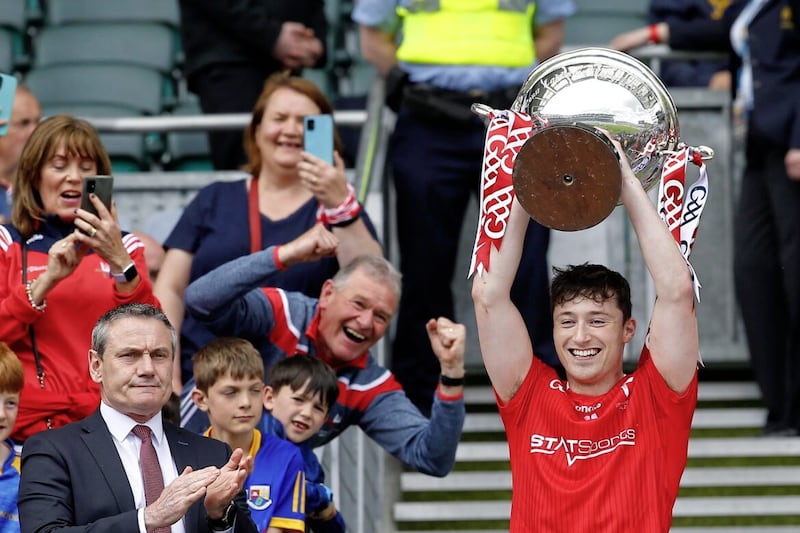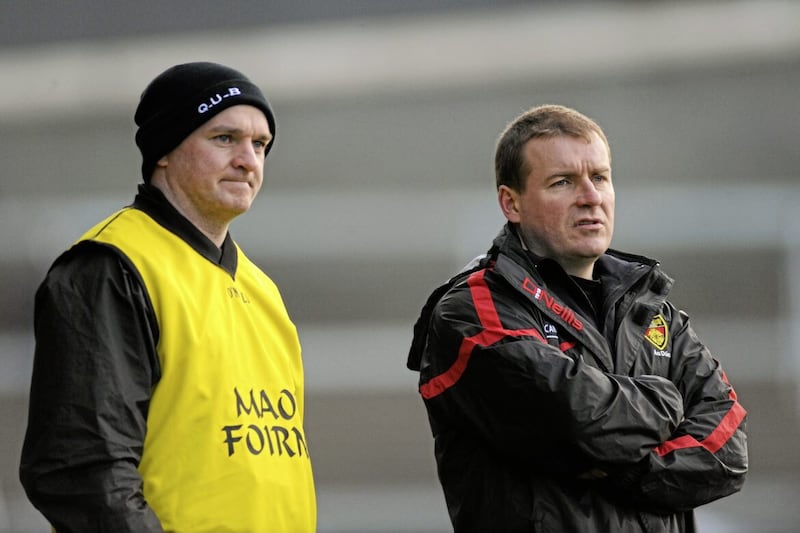WHEN I think of Saipan, I think of how ridiculously young, giddy and foolish, and absolutely hysterical we all were.
Twenty years ago this month, one of the biggest stories in Irish sporting history blew up in our faces.
On the eve of the 2002 World Cup finals in the Far East, all hell broke loose on the tiny western pacific island where the Republic of Ireland had chosen as their pre-tournament base.
When the now infamous row erupted between Mick McCarthy and Roy Keane, the first casualty was perspective.
It was the kind of emotive debate that managed, quite consummately, to divide a nation. You were either in the Keane or McCarthy’s camp. There could be no in between. And if you tried to plant a tentative foot in both camps, you were immediately dismissed from the conversation.
In '02, and just three years into a sports journalism career, I was on my way to the World Cup.
Like many football-mad kids, going to the World Cup finals was the ultimate dream, but one I never thought remotely possible.
The Irish News decided to skip the pre-tournament trip to Saipan – like, what was to see there anyway? - and go straight to Japan, a week out from Ireland’s first group match against Cameroon in Niigata on June 1.
Many other journalists decided to do the same, with a quiet confidence of getting out of the group stages against Cameroon, Germany and Saudi Arabia.
The first inkling we heard of discord in the Irish camp was when we were catching a connecting flight in Amsterdam.
FAI chief Brendan Menton happened to be on our flight and uttered something about “training gear not arriving on time” and that there was talk of Keane leaving the squad.
We’d sensed before then the relationship between manager and player wasn’t great.
Photographer Lorraine O’Sullivan had captured the fraught post-match handshake between the pair following Keane’s gargantuan midfield display that saw off the Dutch at Lansdowne Road the year previous that put Ireland into a very winnable World Cup play-off against Iran.
In those days, Keane was always a brooding-type figure around the Irish camp, physically and emotionally detached from the rest of the group.
And yet, the Manchester United player was at the peak of his powers. There were few players in the world who could dominate a game like he could.
He would be elemental to Ireland's prospects at the World Cup finals.
I remember touching down in Tokyo and feeling woefully ill-equipped to report on one of the biggest sports stories in several generations.
The vast majority of the Irish media had left Saipan, as scheduled, for Izumo – the quaint little Japanese town, two hours from Hiroshima, which would be the team’s tournament base.
But Roy Keane was still in Saipan – and therefore so was the story.
On the fifth anniversary of the Saipan bust-up that resulted in Keane not playing in the finals, photographer Andy Patton was one of only a handful of media people who managed to track the Cork man down at the airport.
“I had no emotional view of the incident between McCarthy and Keane,” Patton said in 2007.
“I was more concerned with trying to capture the moment, getting a record of this time. It's something I didn’t think about until afterwards. The picture of him looking straight ahead at the airport is a quite simple image.
“He's just walking in his own gear; I think he was wearing two watches and carrying a hold-all. Photographically, it's not a great picture; it's not going to win any awards, but it is a record of him leaving Saipan.”
Ironically, Keane used two of Patton’s images in his best-selling autobiography – one of him walking through the airport and the other more telling image of manager and player walking in opposite directions during a tense training session in Saipan.
“It's the biggest story I've covered,” Patton added. “It was exciting being there. You knew something was going wrong at training. I have a few pictures of Keane talking to Packie Bonner and he’s throwing the water bottle away, so you can see the tension in the picture.”
Trying to straddle two time zones – Japan and back home in Ireland – the World Cup I had dreamed about as a kid was a sleep-deprived nightmare for the first seven days.
We door-stepped the team hotel several times to see if Keane had made enough conciliatory noises in an interview with RTE journalist Tommie Gorman back home.
History tells us he didn’t.
I remember draped over the railing of the press tribune in the stunning Niigata Stadium awaiting the start of Ireland’s first game against Cameroon wondering how on earth Keane had kissed this career-defining opportunity goodbye.
At the time, I was firmly in the Mick McCarthy camp. Never before had I witnessed a man age by 10 years in seven days.
There was undoubtedly a certain sympathy for the affable manager at the time, standing outside the team hotel in the twilight, fielding a thousand questions from reporters.
But as time ebbed, McCarthy was culpable for Keane’s exit.
In 2002, he always seemed older to me, but McCarthy was only 43 at the time, a rookie manager who messed up royally in not only failing to retain the services of his best player for the biggest tournament in the world, but showing him the door.
Keane must have been desperately hard to manage in those years, but that was McCarthy’s single, biggest challenge as Ireland boss – and he failed.
But these were the Celtic Tiger years, when the living was a little easier than today, where we could afford to lose the run of ourselves and where a nation could let itself be spilt in two over a player walking out of the World Cup.
Twenty years on, we can reflect on those manic days of Saipan – and smile ruefully at our younger, giddy selves.









